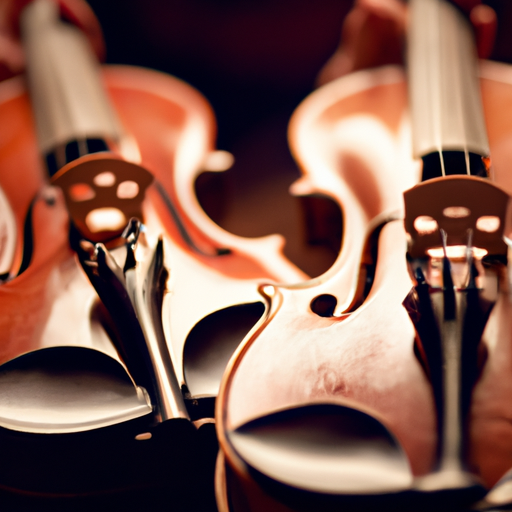
. From A to Z: A Beginners Guide to Playing the Violin is a comprehensive guide that will help you get started on your journey to learning the violin. Whether you're a complete beginner or have some musical experience, this guide will provide you with all the information you need to know to play this beautiful instrument.

The violin is a versatile and expressive instrument that has been captivating audiences for centuries. Learning to play the violin offers numerous benefits, including improved cognitive skills, enhanced coordination, and a deeper appreciation for music. It is also a great way to express yourself creatively and bring joy to yourself and others through your music.

When starting your violin journey, it's important to choose the right instrument. Violins come in various types and sizes, and selecting the appropriate one for beginners is crucial. This section will guide you through the different types of violins available, such as acoustic, electric, and student models. It will also explain the sizes of violins and how to determine the correct size based on your age and arm length.
In addition to the violin itself, there are essential accessories that every violinist needs. This section will cover the different parts of the bow and how to choose the right one for your playing style. It will also discuss the importance of high-quality strings and how to properly care for them. Lastly, it will explain the purpose of rosin and how to apply it to your bow to produce a good sound.
Proper posture and hand position are essential for playing the violin comfortably and efficiently. This section will teach you how to hold the violin correctly, including the placement of the chinrest and shoulder rest. It will also explain the proper hand position for both the left hand, which holds the neck, and the right hand, which controls the bow.
Before diving into playing melodies, it's important to learn the basic techniques and how to tune your violin. This section will guide you through the proper way to use the bow on the open strings to produce a clear and resonant sound. It will also explain the process of tuning the violin using an electronic tuner or a piano.
Reading sheet music is a fundamental skill for any musician. This section will introduce you to the staff, notes, rhythms, and other musical symbols commonly used in violin music. It will also provide tips on how to practice reading sheet music effectively and develop your sight-reading skills.
Now that you have a solid foundation, it's time to start playing actual songs. This section will provide you with a selection of simple melodies and exercises specifically designed for beginners. You will learn how to play popular tunes and gradually build your repertoire, all while improving your technique and musicality.
Developing finger dexterity is crucial for playing more advanced music on the violin. This section will introduce you to scales and arpeggios, which are essential exercises for improving finger coordination, intonation, and overall technique. It will also provide practice tips and exercises to help you master these fundamental elements of violin playing.
Playing the violin is not only a solitary pursuit but also an opportunity to connect with other musicians. This section will discuss the benefits of joining an orchestra, ensemble, or music school. It will provide guidance on finding the right musical community and participating in group performances, which can greatly enhance your musical experience and provide valuable learning opportunities.
The journey of learning the violin is a rewarding and fulfilling one. This section will remind you to enjoy the process, embrace challenges, and celebrate your progress along the way. It will also provide resources for further exploration, including books, online tutorials, and violin communities, to continue your growth as a violinist.
Embark on your violin journey today and discover the joy of playing this beautiful instrument. Whether you aspire to become a professional violinist or simply want to experience the pleasure of making music, the violin offers endless possibilities. Start with the basics, practice regularly, and most importantly, enjoy the process of learning and expressing yourself through music.